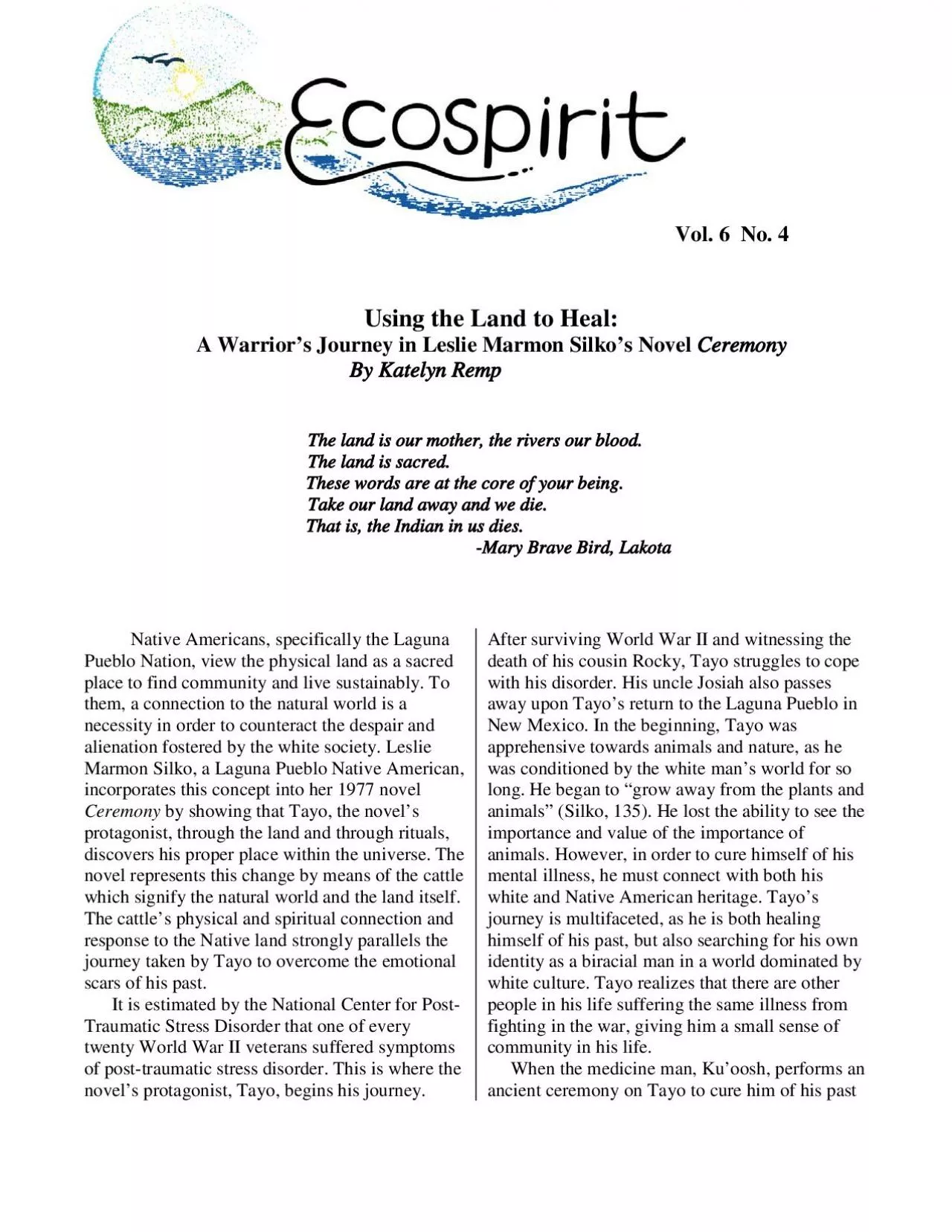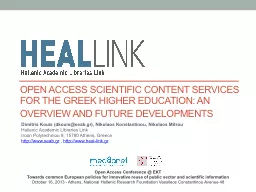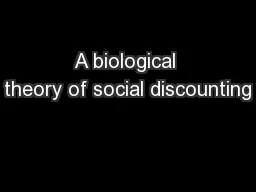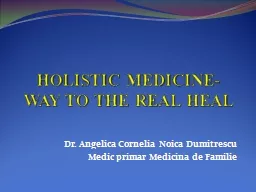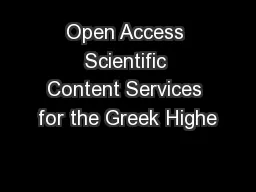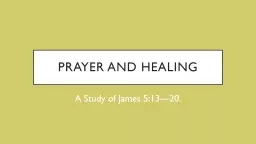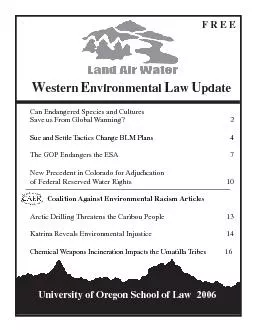PDF-VolNo 4Using the Land to Heal
Author : ceila | Published Date : 2021-06-19
A Warrior146s Journey in Leslie Marmon Silko146s Novel Ceremony By Katelyn Remp The land is sacred These words are at the core of your being Take our land away and
Presentation Embed Code
Download Presentation
Download Presentation The PPT/PDF document "VolNo 4Using the Land to Heal" is the property of its rightful owner. Permission is granted to download and print the materials on this website for personal, non-commercial use only, and to display it on your personal computer provided you do not modify the materials and that you retain all copyright notices contained in the materials. By downloading content from our website, you accept the terms of this agreement.
VolNo 4Using the Land to Heal: Transcript
Download Rules Of Document
"VolNo 4Using the Land to Heal"The content belongs to its owner. You may download and print it for personal use, without modification, and keep all copyright notices. By downloading, you agree to these terms.
Related Documents

